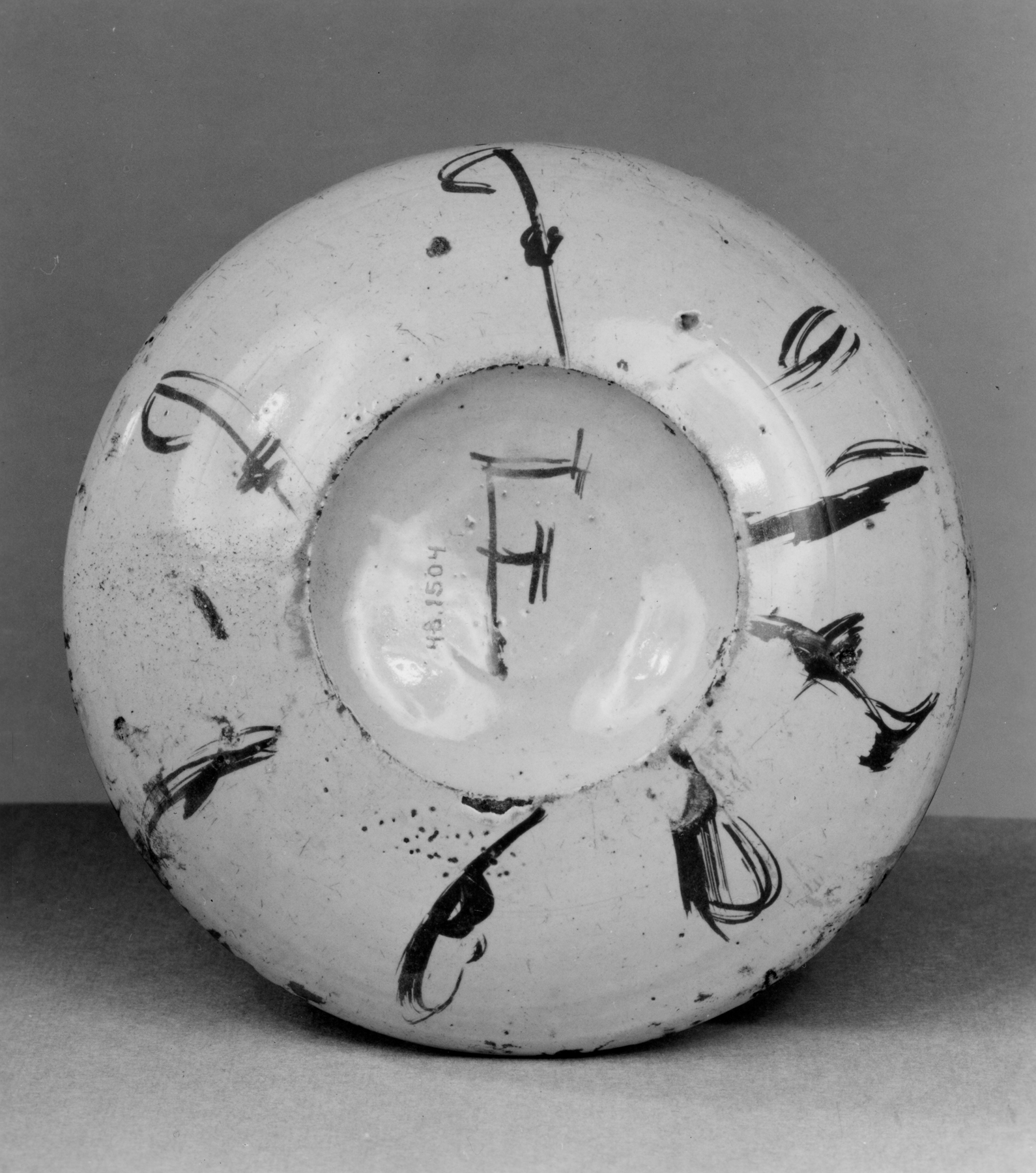Small Dish with Saint Jerome
(Renaissance Europe )
In the center roundel of this dish, Saint Jerome kneels to the left and gazes at a crucifix. A lion, the saint’s traditional attribute, is shown to the left. Depictions of Saint Jerome doing penance were popular with the public throughout the 1500s and therefore with painters, including maiolica painters (see, for example, 48.1343 and 48.1504). The rim is decorated with a repeating pattern of serrated leaves, with a bud surmounted by a horizontal leaf between each, painted in gold and ruby luster. On the back, the letter “F” is painted in ruby luster, surrounded by crooks irregularly spaced on the outer ring. The “F” probably identifies the workshop where the luster was applied. This ware was likely produced in Gubbio, a center for maiolica production known for its luster glazes. For more on the luster technique, see 48.1320; for “maiolica,” see 48.1336.
Inscription
Provenance
Provenance (from the French provenir, 'to come from/forth') is the chronology of the ownership, custody, or location of a historical object. Learn more about provenance at the Walters.
Jacques Seligmann, Paris [date of acqusition unknown], by purchase; Henry Walters, Baltimore, 1912, by purchase; Walters Art Museum, 1931, by bequest.
Geographies
Italy, Gubbio (Place of Origin)
Measurements
1 3/8 x 7 3/16 in. (3.5 x 18.3 cm)
Credit Line
Acquired by Henry Walters, 1912
Location in Museum
Not on view
Accession Number
In libraries, galleries, museums, and archives, an accession number is a unique identifier assigned to each object in the collection.
In libraries, galleries, museums, and archives, an accession number is a unique identifier assigned to each object in the collection.
48.1504




